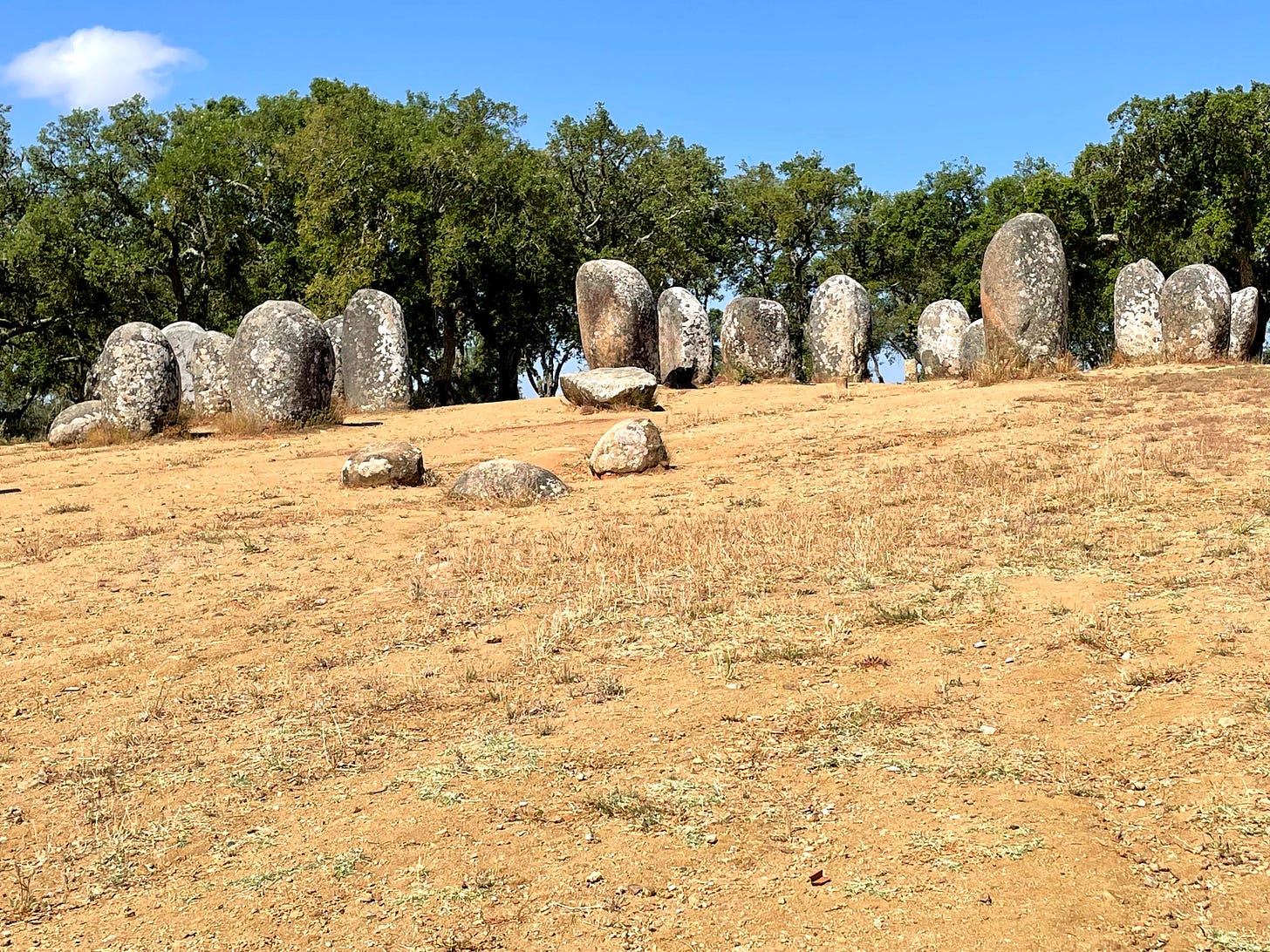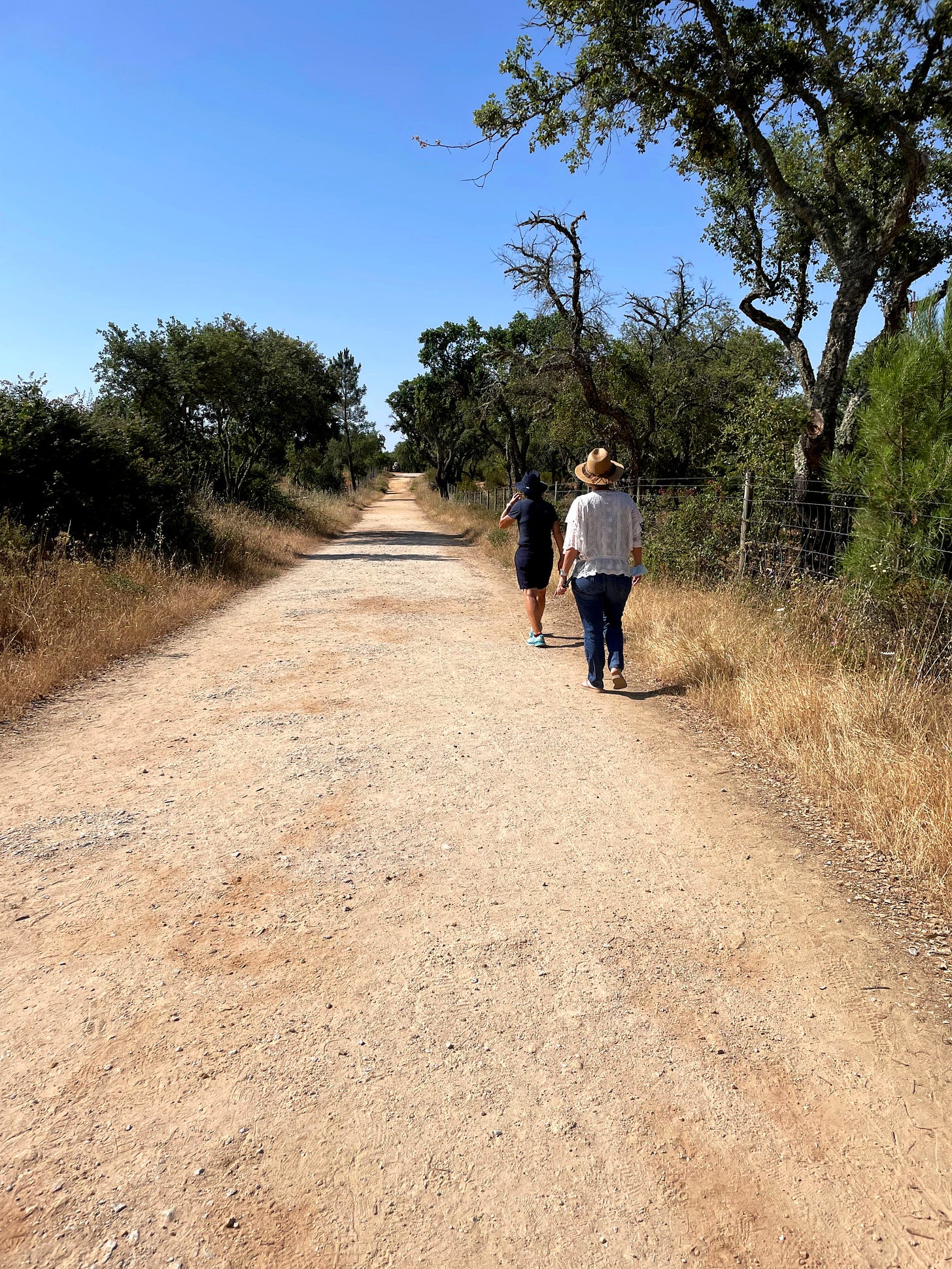During our first strip to Évora, we failed to stop by the Almendres Cromlech, the monoliths nearby. So as we discussed our upcoming trip with friends, I suggested it. Fortunately, DJ was equally enthusiastic.
A Bumpy Ride
Google Maps provided excellent directions to our destination. What it did not tell us was what kind of ride to expect. We turned off the paved road onto a rutted, dirt path. Fairly quickly we saw a sign that said 3km…okay, not that bad just 1.5 miles. I swear after driving for 10 minutes we saw another sign stating 3km, and perhaps a third. It was slow going, even for DJ who does a mean impersonation of Mario Andretti or a typical Portuguese driver. But finally, we found a parking area and a narrow path.
As we drove and walked we observed the many cork trees that lined our path. I did some research (yes, you are welcome) and learned that Portugal produces about 50% of the world’s cork supply…most made into wine bottles’ corks. After planting a cork oak tree you wait 25 years. The first harvest is not the best and in fact, is not used for wine corks. After that first, virgin harvest you can continue to harvest each tree every nine years…making it a sustainable product that is now used for clothing, accessories, and flooring.
A tree will continue to produce cork for nearly 300 years. We observed trees along the way with numbers…we assumed for the number of years it had been since its last harvest. The harvest is done in the warmest months when the bark expands. The process is a simple one. One man at the top and one at the bottom…each with axes. After cutting a line around the trunk, they simply peel the cork off.
A Path and A Sign
After parking, and checking to make sure all our fillings and crowns were still in place, we walked down a path. It was early on Sunday morning, and we were the only visitors. A sign provided an overview of the monoliths in Portuguese and English. It pointed out a few stones that if one looked carefully you could find ancient carvings. I wondered aloud if we could locate the carvings. DJ took out her cell phone, snapped the map, and took up the challenge. (No surprise, she found every one.)
While there are other monoliths in the Alentejo this is the largest. It is believed that many of these back to the 6th century, B.C. And in fact, their formation which was refined over time is quite complex as shown by this image that I captured from Wikipedia:
Many believe that the monoliths served a religious or ceremonial purpose. Others suggest that they functioned as a primitive astronomic observatory as a line can be drawn to the winter solstice. Most interesting is the fact that the area’s latitudinal position and that of Stonehenge’s (which is much younger) both reflect the maximum moon elongation at their respective times.
Whatever their purpose, I would recommend you visit. There are no giant billboards advertising their presence. No ticket window and I suspect never a very large crowd. Here, in the middle of a bunch of half-naked cork trees are stones that were carefully placed here more than 2500 years ago.










So interesting. Thank you for all your efforts.
Yes, cool hat.
I like the new hat. Very classy. Thanks for the monolith fact check.